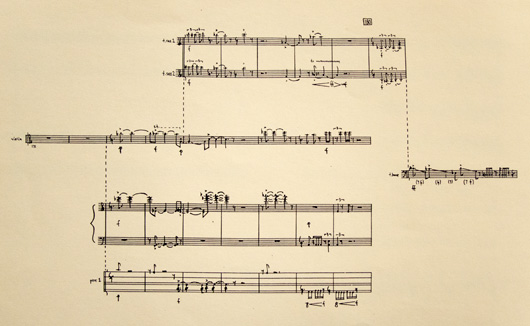Instrumental Compositions
Idler Xaxis : Gamma Interlace (1993)
Idler Xaxis : Gamma Interlace explores the use of polyrhythms at the macro, micro, and nano scales, but does so using nothing more than even divisions of the beat (e.g. quarter notes, eighth notes, etc.). Instrumentation is two tenor saxophones, trombone, Eb clarinet, amplified violin, piano, and two percussion. See the score.
Sound Booze (1996)
Sound Booze was commissioned for the polka concert at the 3:2 New Music Festival in Wesleyan, CT in 1996. It was written for soprano, alto sax/bari sax, tenor sax/clarinet, alto sax/tenor sax, trumpet, trombone, violin, and piano. The woodwinds sometimes play both of their instruments at the same time.
Schemata Decept (1993)
Schemata Decept was written for a 1993 concert presented during the School for Designing Society summer school at the Gesundheit! Institute in West Virginia. It uses concepts from natural genetics as a compositional tool, and is composed for alto saxophone, tenor sax/Eb clarinet, trombone, and piano.
Iswasknock (1990)
Iswasknock was my first composition, written in 1990 for solo piano and performed by David Kelley. Iswasknock seeks to examine the boundaries of the so-called New Complexity school of composition by taking complex polyrhythms to the extreme. Using heavily nested polyrhythms, the rhythms are so complex and require such a fine level of subdivision to play correctly that it is impossible to learn without rote memorization of a computer rendering. Kelley used such a rendering to learn the rhythms and remains the sole person to perform the piece.

